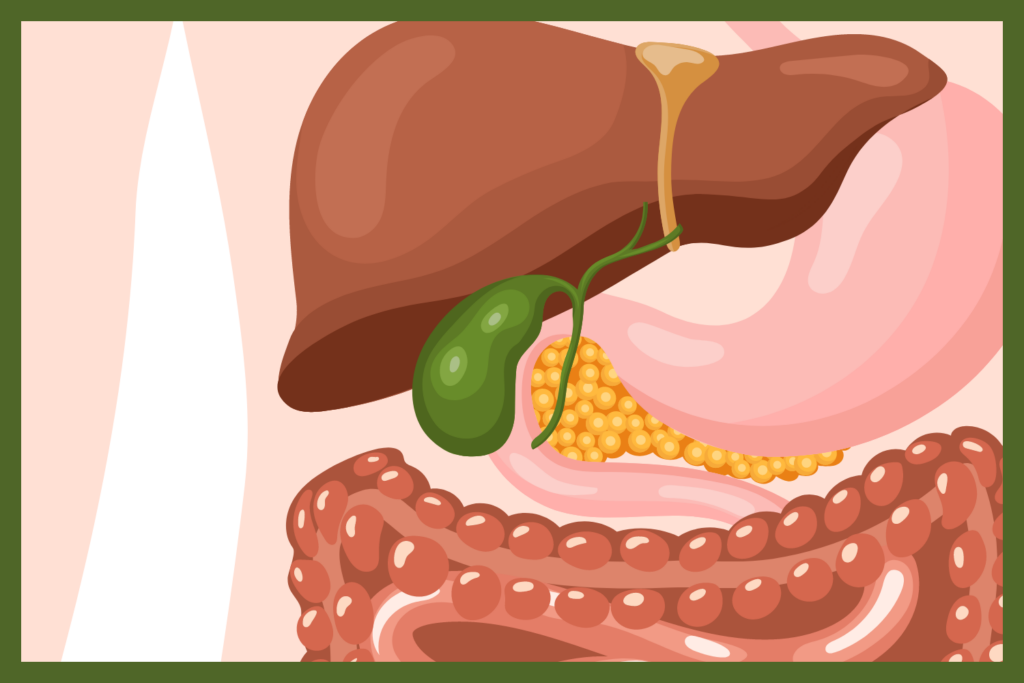Gallbladder Health Demystified

As a general surgeon, I see many patients who are experiencing abdominal pain and discomfort. Often times, it’s related to the gallbladder, the small, pear-shaped organ on the upper right corner of your abdomen that not many people are familiar with.
What does the gallbladder do?
To answer this question and understand the function of the gallbladder, we must first discuss bile. Bile is a greenish substance that is made in your liver and used in the intestines to digest the fat that you eat. Fat is a necessary and normal part of a healthy diet and is essential in the digestion of vitamins A, D, E and K. Bile is made of several different components that can crystalize into stones.
There is a main pathway between the liver¾ where bile is made¾ and the intestines¾where it is used¾called the common bile duct. The gallbladder is a small organ that buds off of the common bile duct via the cystic duct to hold bile. The gallbladder walls absorb water and concentrates bile, which is how gallstones are formed.
When you eat, food with fat hits the intestines near where the common duct dumps out and a signal is sent to the gallbladder to contract and push out bile. If you have stones blocking the gallbladder opening or the ducts connecting it, this contraction against the blockage of a stone causes stretching of the gallbladder wall and pain. If the gallstone becomes lodged hard in the cystic duct, there is a blockage that stops the free flow of fluid along the tract, which results in the build-up of bacteria and infection around the gallbladder, called acute cholecystitis.
Diagnosing a gallbladder infection
Pain from acute cholecystitis (infected gallbladder) is most classically presented in the right upper quadrant of the abdomen, under the ribcage on the right side. However, some people experience the pain more in the middle of the stomach or back, even up to the shoulder blade. The timing of pain from an irritated or infected gallbladder is an important part of the diagnosis process. Because the gallbladder doesn’t contract until the fat hits the intestines, people usually don’t feel gallbladder pain until at least an hour, or more, after eating. This time delay can often cause confusion about the origin of the pain.
Some diagnoses that are often confused with gallbladder pain are heart attack, food sensitivity, reflux and irritable bowel disease. Fatty foods that activate the gallbladder and are most often reported by patients as foods that cause pain are: ice cream, pizza, fried foods and salad (salad dressing always contains fat).
Treating a gallbladder infection
It is important to note that just because a person has a gallstone doesn’t mean their gallbladder needs to be removed. In fact, 80% of people with gallstones have zero symptoms. For those who do experience pain and symptoms from acute cholecystitis, there are a few treatment options. Like appendicitis or diverticulitis, this infection can be treated with antibiotics and usually does improve. With time and rest, the stone usually becomes dislodged and the pain goes away temporarily.
There is no treatment to dissolve gallstones. A laparoscopic cholecystectomy, the surgical removal of a gallbladder, is the standard of care for acute cholecystitis and the only way to prevent the pain from continuing to come back in time.
If you are experiencing abdominal pain, want to learn more about gallbladder health, or have other questions about your inner organs, our team at Island Surgeons can help! Call 360.293.5142 for a consultation.
